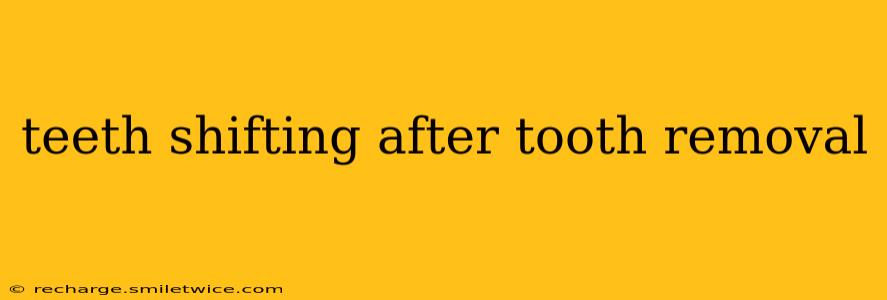Losing a tooth, whether through extraction or an accident, can significantly impact your smile's aesthetics and functionality. One common consequence is the shifting of surrounding teeth. This isn't just a cosmetic concern; it can lead to bite problems, jaw pain, and further dental issues down the line. Understanding why teeth shift after extraction and what can be done to prevent or mitigate this is crucial for maintaining long-term oral health.
Why Do Teeth Shift After Tooth Removal?
Teeth are remarkably dynamic structures, constantly responding to pressure and forces within the mouth. When a tooth is removed, the surrounding teeth lose their natural neighbor and the supporting bone structure begins to diminish. This creates a void and imbalances the forces acting on the remaining teeth. Consequently, they begin to drift or shift into the empty space. This is a natural biological response, and the speed at which it occurs varies depending on several factors including the location of the extracted tooth, the patient's age and bone density, and the presence of other underlying dental issues.
How Long Does it Take for Teeth to Shift After Tooth Extraction?
The timeframe for teeth shifting varies considerably. In some cases, noticeable movement might occur within weeks, while others may see changes gradually over months or even years. The speed of the shift is dependent upon several factors. Teeth in the front of the mouth often shift more quickly than those at the back. Younger individuals may experience more rapid shifting due to their more pliable bone structure.
What Happens if Teeth Shift After Tooth Removal?
Untreated tooth shifting after extraction can result in various problems:
- Malocclusion (bad bite): Shifted teeth can disrupt the proper alignment of your bite, leading to difficulties chewing, jaw pain (TMJ disorders), and increased wear on your teeth.
- Increased risk of periodontal disease: Shifted teeth can create spaces and crevices that make it difficult to clean properly, increasing the risk of gum disease and tooth decay.
- Crowding: Shifting can cause overcrowding of remaining teeth, leading to further alignment problems.
- Aesthetic concerns: Significant shifting can negatively affect the appearance of your smile, creating gaps or an uneven appearance.
What Can Be Done to Prevent Teeth Shifting After Tooth Extraction?
Several options can help prevent or minimize tooth shifting after an extraction:
- Dental Implants: These are the most effective method of preventing shifting. A dental implant acts as a replacement tooth root, maintaining the integrity of the jawbone and providing stability to the surrounding teeth.
- Dental Bridges: Bridges fill the gap left by the missing tooth, preventing the adjacent teeth from shifting into the space. However, bridges require the modification of adjacent healthy teeth.
- Removable Partial Dentures: While not as effective as implants or bridges in preventing shifting, partial dentures offer a more affordable option that can replace a missing tooth and help maintain the space.
- Retainers: After orthodontic treatment (braces), retainers are essential to prevent teeth from shifting back to their original positions. A retainer might also be considered after tooth extraction to help maintain the alignment of existing teeth.
Can Teeth Shifting After Extraction Be Reversed?
In some cases, mild shifting can be addressed through orthodontic treatment, such as Invisalign or traditional braces. However, the effectiveness of orthodontic treatment depends on the extent and duration of the shifting. Severe shifting may be more challenging to correct and might require more extensive treatment.
How Much Does it Cost to Prevent Teeth Shifting After Tooth Removal?
The cost of preventing tooth shifting varies significantly based on the chosen method. Dental implants are generally the most expensive option, followed by bridges and then removable partial dentures. Orthodontic treatment cost depends on the complexity of the case. It's essential to consult with your dentist or orthodontist for a personalized cost estimate.
What are the Long-Term Effects of Teeth Shifting After Tooth Removal?
The long-term effects of untreated tooth shifting can be significant, impacting not only your smile’s aesthetics but also your oral health and overall well-being. These can include chronic jaw pain, difficulty chewing, increased susceptibility to cavities and gum disease, and even the eventual loss of more teeth. Addressing tooth shifting promptly is crucial for preventing these potential long-term complications. Regular dental checkups are key to early detection and treatment.
Remember, this information is for general knowledge and shouldn't replace professional dental advice. Always consult with your dentist or orthodontist to determine the best course of action for preventing or addressing tooth shifting after a tooth extraction. They can assess your individual situation and recommend the most suitable treatment option based on your specific needs and circumstances.
